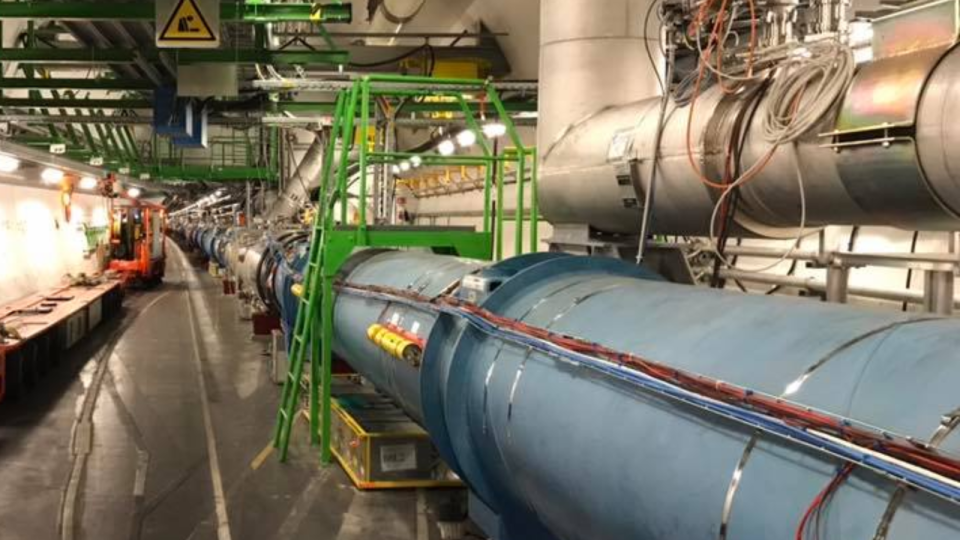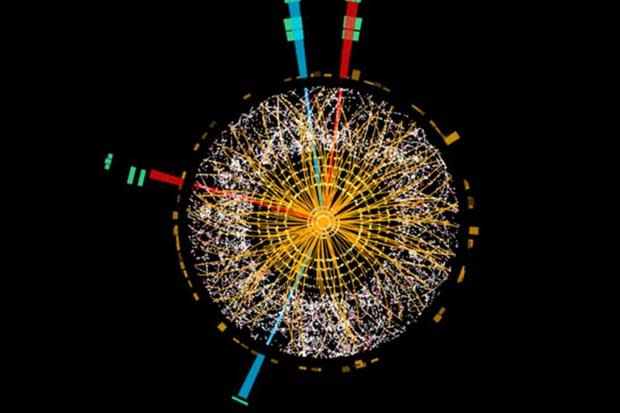Plans for the successor to the most powerful particle accelerator in the world, the Large Hadron Collider (LHC), are in full swing.
The new atom smasher, called the Future Circular Collider (FCC), will dwarf the LHC in size and power. It will fuse particles with so much energy that scientists say it could be able to probe our universe’s most mysterious entities: dark energy and dark matter.
LHC operators at CERN announced the results of an “interim evaluation” of their FCC feasibility study to the press on Monday (February 5). The feasibility study began in 2021 and is expected to be completed in 2025. The findings to date represent three years of work involving scientists and engineers from around the world examining the placement of the new accelerator ring, implementation of the FCC facility, detector concepts and financing aspects.
The FCC will fall under the jurisdiction of France and Switzerland, just as the LHC currently does, but the future accelerator will be 90.7 kilometers long, which is more than three times as long as CERN’s current particle accelerator, which is 17.8 kilometers amounts to. 27 kilometers) long. The LHC is the largest and most powerful particle accelerator in the world.
Related: Dark matter may lurk in the particle jets of the Large Hadron Collider

The FCC will work similarly to the LHC, accelerating charged particles around a loop, using superconducting magnets, and then smashing them together as they approach the speed of light.
Scientists can investigate fundamental physics by observing showers of secondary particles that form when particles such as protons collide. But while the LHC can reach energies of around 13 terra-electron volts (TeV) when operating at full power, CERN says the FCC should be able to reach energies of up to 100 TeV.
“Our goal is to study the properties of matter at the smallest scales and at the highest energy,” CERN Director General Fabiola Gianotti said during the presentation of the interim report in Geneva on Tuesday (February 6).
Why do particle accelerators need more power?
The LHC’s crowning achievement so far is undoubtedly the discovery of the Higgs boson, the force-carrying particle of a field called the Higgs field that permeates the universe and dictates the masses of most other particles.
The groundbreaking observation of the Higgs boson by two LHC detectors was announced on July 4, 2012, and is credited with completing the Standard Model of particle physics, humanity’s best description of the universe, particles and their interactions at the subatomic scale.
Yet the Standard Model still requires some adjustments—and since 2012, scientists have been using the LHC to look for physics outside the model to make those adjustments. The success has been limited. This search will get a boost when the LHC’s high-brightness upgrade is completed, meaning the particle accelerator can perform more collisions and give scientists more opportunities to explore exotic physics.


The two main outliers of the Standard Model (i.e. why some of these adjustments are necessary) are dark matter and dark energy.
These phenomena, sometimes collectively known as the ‘dark universe’, pose such great mysteries to scientists because dark energy accounts for about 68% of the universe’s energy and matter, while dark matter accounts for about 27% of these continents. takes into account. But neither can be seen because they don’t interact with light, nor has anyone been able to figure them out through other forms of direct detection. That means the matter and energy we understand and can account for makes up no more than 5% of the universe’s contents, and we have little idea what about 95% of the universe actually is.
And exploring these aspects of the universe may require particles to be smashed together with much more energy than the high-brightness LHC is capable of.
For starters, dark matter cannot be “standard matter,” like the atoms that make up the things we see around us every day, like stars, planets, and our bodies. Remember how it doesn’t interact with light? Well, protons, neutrons and electrons – collectively known as ‘baryons’ – do. So dark matter must be something else.
Currently, scientists can only infer the presence of dark matter through its interaction with gravity and the effect this has on baryonic matter and, in turn, on light.
Dark energy is even more problematic. It is the force that scientists see as driving the acceleration of the expansion of the universe.
It is a period of expansion separate from the initial inflation of the universe, which was caused by the Big Bang. After that early expansion came to a halt, the universe inexplicably began expanding again at a later time. This rate of expansion is actually accelerating to this day, with dark energy being used to explain this action.
But as we’ve discussed, scientists don’t actually know what dark energy is.
To see why that’s disturbing, imagine pushing a child on a swing. The big bang is like your first and only push that sets the swing in motion. The swing can continue for a short while even without any action on your part, and then the swing will reach its halfway point. Then imagine that it suddenly starts moving again, even though you are just standing there. Not only that, but it also swings faster and faster and reaches higher and higher points. This is similar to what dark energy does to the structure of space.
CERN hopes that the FCC’s high-energy collisions can reveal the nature of this persistent motion in the late universe and the particles that make up dark matter.
However, it will take some time before this future particle accelerator is ready to begin its investigation into the dark universe.
The timeline and costs of the Future Circular Collider
In 2028, three years after the completion of the FCC’s feasibility study, CERN member states will meet to decide whether to give the FCC the green light. Should the future collision get the green light, CERN says, construction will begin in the mid-2030s.
The FCC will be completed in phases. The first stage is an electron-positron collider (FCC-ee) that collides negatively charged electrons, their positive counterparts against particles known as positrons, and other light particles. CERN adds that FCC-ee should start in 2045.
The FCC’s second machine will be a proton colliding accelerator (FCC-hh) that sits next to the FCC-ee in the same evacuated tunnel, buried beneath the French-Swiss Alps and Lake Geneva. According to CERN, this part would not come online until 2070 at the earliest.
Related stories:
– A huge galaxy without dark matter is a cosmic puzzle
— Researchers dig deep underground in the hope of finally detecting dark matter
— Euclid ‘dark universe’ telescope captures first color view of the cosmos (images)
At the CERN press conference, Gianotti broke down some of the costs of the FCC, saying that the first phase of the FCC-ee alone would cost an estimated $17 billion.
The director general of CERN justified the costs by adding that the FCC is the only machine that would allow humanity to make the great leap in studying matter needed to unravel the secrets of the dark universe .